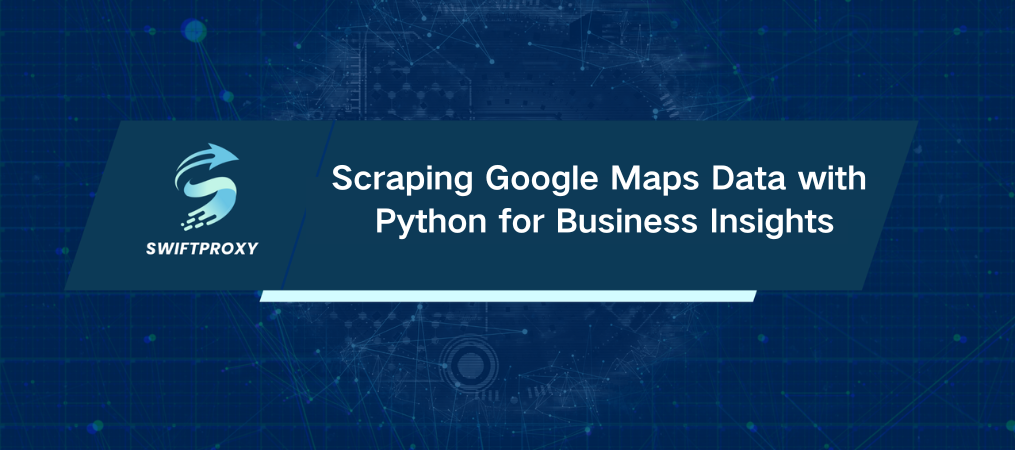Scraping Google Maps Data with Python for Business Insights

If you're looking to harness the power of Google Maps data for business insights, competitor analysis, or location-based market research, you're in the right place. The ability to scrape Google Maps using Python can unlock valuable data like business names, addresses, ratings, and even geographical coordinates. But how do you get started? This blog walks you through the steps to scrape this data using Python libraries—requests, lxml, and csv—to collect structured, usable data. Let's dive in.
The Advantages of Scraping Google Maps Data
Think about the number of businesses and services around you, all with a wealth of information sitting right at your fingertips. Want to analyze restaurant ratings, spot emerging trends in services, or find the best location for a new venture? Scraping Google Maps gives you the data needed for these tasks and more. From competitor analysis to market expansion, scraping allows you to gather information that would otherwise be hard to obtain.
Getting Set Up
Before we dive into the code, you'll need to have a few Python libraries ready to go. Here's what you need:
requests – To make HTTP requests to the Google Maps page.
lxml – For parsing HTML content.
csv – To export the scraped data into a CSV file.
To install them, just run:
pip install requests
pip install lxml
Once installed, let's move on to the actual scraping process.
Scraping Google Maps Data in Simple Steps
I'll guide you through each step to ensure you can scrape Google Maps data like a pro.
Step 1: Set the Target URL
The first thing you need is the URL from which to scrape data. You’ll target the Google Maps search result URL for the type of businesses or places you're interested in. Here's an example:
url = "https://www.google.com/search?sca_esv=04f11db33f1535fb&sca_upv=1&tbs=lf:1,lf_ui:4&tbm=lcl&sxsrf=ADLYWIIFVlh6WQCV6I2gi1yj8ZyvZgLiRA:1722843868819&q=google+map+restaurants+near+me"
Step 2: Set Headers and Proxies
Google might not appreciate you scraping data, so mimicking a legitimate user is crucial. This is where setting headers and using proxies come into play.
Headers: These headers simulate the behavior of a web browser.
Proxies: If you're making multiple requests, you need proxies to avoid getting blocked. Use residential proxies for the best results.
Here's the Python code for headers and proxies:
headers = {
'User-Agent': 'Mozilla/5.0 (Windows NT 10.0; Win64; x64) AppleWebKit/537.36 (KHTML, like Gecko) Chrome/91.0.4472.124 Safari/537.36',
}
proxies = {
"http": "http://username:password@your_proxy_ip:port",
"https": "https://username:password@your_proxy_ip:port",
}
Step 3: Get the Page Content
Now, you're ready to send a request to the Google Maps URL and retrieve the page content.
import requests
response = requests.get(url, headers=headers, proxies=proxies)
if response.status_code == 200:
page_content = response.content
else:
print(f"Failed to retrieve the page. Status code: {response.status_code}")
Step 4: Analyze the HTML Content
Once you have the page content, you'll need to parse the HTML using lxml. This will allow you to identify the specific elements you want to extract.
from lxml import html
parser = html.fromstring(page_content)
Step 5: Find the Data XPaths
To scrape data correctly, you must understand the structure of the HTML. Use your browser's Developer Tools (right-click > Inspect) to find the elements that contain the data you need, such as restaurant names, addresses, and geographical coordinates.
Here are the XPaths for some common elements:
Restaurant Name: //div[@class="OSrXXb"]/text()
Address: //div[@class="rllt__details"]/span/text()
Geo Coordinates: //div[@data-lat], //div[@data-lng]
Step 6: Collect the Data
Now that you have the XPaths, you can extract the data using them:
results = parser.xpath('//div[@jscontroller="AtSb"]')
data = []
for result in results:
name = result.xpath('.//span[@class="OSrXXb"]/text()')[0]
address = result.xpath('.//div[@class="rllt__details"]/span/text()')[0]
latitude = result.xpath('.//@data-lat')[0]
longitude = result.xpath('.//@data-lng')[0]
data.append({
"name": name,
"address": address,
"latitude": latitude,
"longitude": longitude
})
Step 7: Save Data to CSV
After extracting the data, the final step is to save it into a CSV file for easy analysis.
import csv
with open("google_maps_data.csv", "w", newline='', encoding='utf-8') as file:
writer = csv.DictWriter(file, fieldnames=["name", "address", "latitude", "longitude"])
writer.writeheader()
for entry in data:
writer.writerow(entry)
print("Data has been successfully saved to google_maps_data.csv!")
Final Thoughts
Web scraping Google Maps data using Python can provide valuable insights, but it's important to be mindful of several factors. First, consider rate limiting to avoid overwhelming Google with too many requests at once. Proxies and IP rotation can also help prevent being blocked by Google's anti-bot measures. Additionally, legal and ethical considerations are crucial, so always review Google's terms of service before scraping any data.
By following these guidelines, you can efficiently collect data for various purposes such as analysis, decision-making, and more. Whether you're conducting market research or enhancing your location-based services, the data you gather can be highly beneficial.

















































